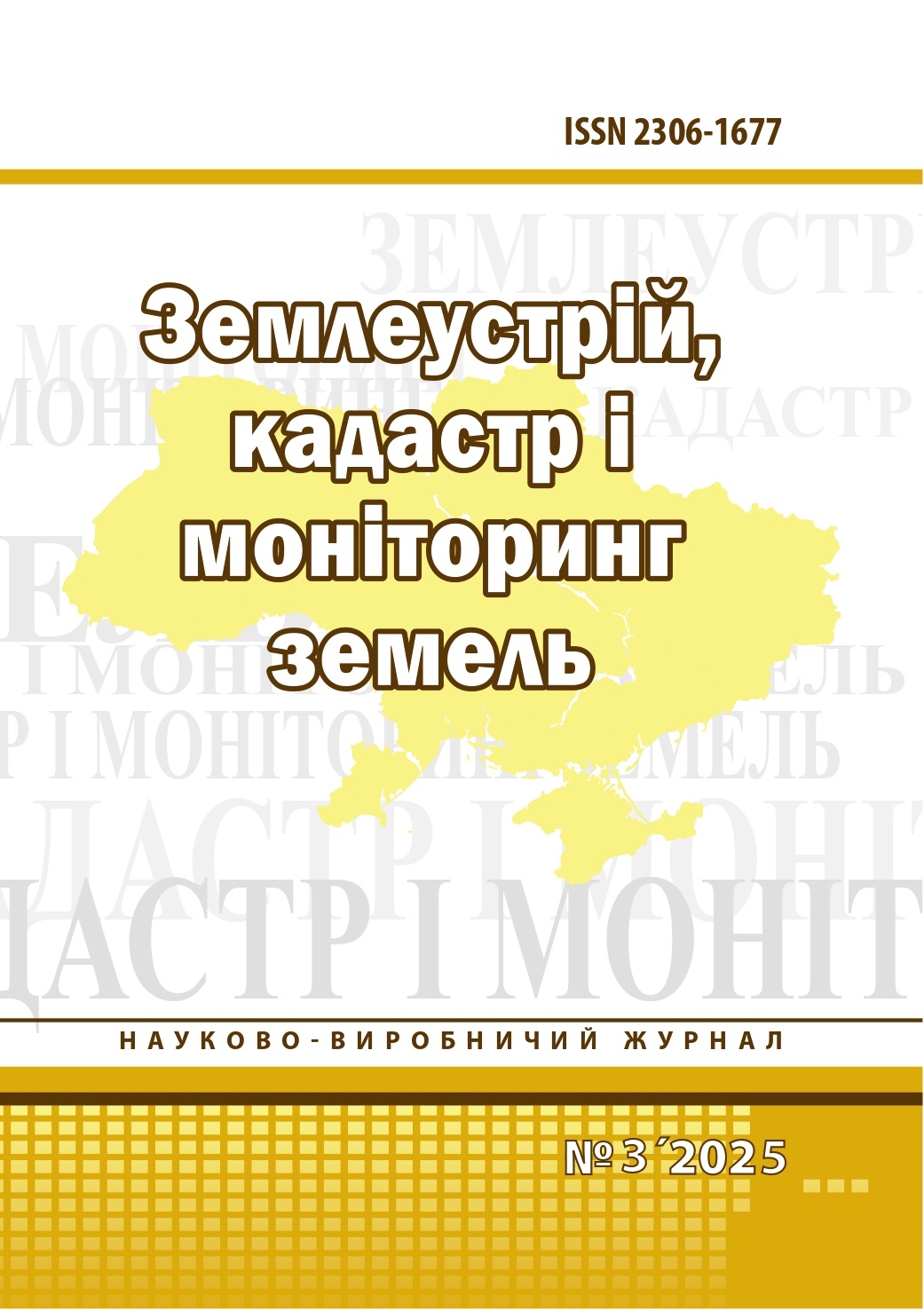Стратегія підвищення економічної ефективності землекористування авіаційного транспорту
DOI:
https://doi.org/10.31548/zemleustriy2018.04.05Анотація
Розглянуто питання щодо формування система ефективного землекористування авіаційного транспорту, яке має на меті отримання певного обсягу матеріальних благ за умови мінімальних капітальних та енергетичних затрат, а також досягнення максимальної продуктивності використання природних ресурсів і додержання екологічної безпеки природного навколишнього середовища.
Функціонування авіаційної галузі є надзвичайним економічним внеском щодо рівня продуктивності інших видів промисловості, так є потужним фіксатором їх зростання. Такий вплив, в свою чергу, сприяє підвищенню рівня продуктивності світової економіки.
Обґрунтовано, що економічна оцінка ефективності є дуже важливим поняттям, яке має на меті визначити найбільш оптимальні для авіапідприємства витрати праці та капіталу, отримання прибутку, відшкодування збитків, використання трудових, матеріальних, і в першу чергу земельних ресурсів, як беззаперечного територіального базису.
Одним із перших питань, які виявляють рівень економічної ефективності землекористування авіаційного транспорту, є дохід (прибуток), як кінцевий результат.
Представлені основні економічні показники ефективності землекористування авіаційного траснпорту, які розраховуються з обов’язковим урахуванням площі земельної ділянки та конкретного періоду часу, протягом якого дана земельна ділянка експлуатується: потенціал землекористування; інтенсивність землекористування, ефективність землекористування та оцінка страхових ризиків.
Основні способи щодо підвищення рівня економічних показників землекористування авіаційного транспорту мають на меті удосконалити структуру капіталовкладень та планування розвитку інфраструктури в тих районах, на територіїї яких можливе розширення промислових та комерційних об’єктів. Така стратегія капіталовкладень також має на меті зменшити кількість житлової забудови в районах поблизу аеропортів, оскільки ці об’єкти несумісні один з одним.
Ключові слова: землекористування авіаційного транспорту, показники економічної ефективності, стратегія удосконалення та розвитку.
Посилання
Novakovska, I. (2016). Upravlinnia misʹkum zemlekorustyvanniam: monohrafiya. Kyiv: Agrarnaya Nauka. [in Ukrainian]
Novakovska Iryna, Skrypnyk Liliia. Ecological safety of land resources for integrated development of national aviation network in the context of European integration [collective monograph]/ Informācijas Sistēmu Menedžmenta Augstskola, ISMA University, Riga, Latvia,2017. – Vol. 2, – p.50-59
Janic, M. (2013). Airport analysis, planning, and design: Demand, capacity, and congestion. New York, NY: Nova.
Airport environmental noise mapping and land use management as an environmental protection action policy tool: The case of the Larnaka International Airport. Science of the Total Environment, 424, 162–173.
https://doi.org/10.1016/j.scitotenv.2012.02.036
Analyzing, modeling, and assessing the performances of land use by airports // International Journal of Sustainable Transportation. – 2015. – Avialable at:
International Civil Aviation Organization. Airport Design Guidelines (Doc 9184), Part 2 "Land Use and Environmental Protection". ICAO, Montreal, Quebec, Canada, third edition, 2002
TRB (Transportation Research Board). (2010). Enhancing airport land use compatibility, Volume 1: Land use fundamentals and implementation resources (ACRP Report 27).Washington, DC
Завантаження
Опубліковано
Номер
Розділ
Ліцензія
Стосунки між правовласниками і користувачами регулюються на умовах ліцензії Creative Commons Із Зазначенням Авторства – Некомерційна – Поширення На Тих Самих Умовах 4.0 Міжнародна (CC BY-NC-SA 4.0):https://creativecommons.org/licenses/by-nc-sa/4.0/deed.uk
Автори, які публікуються у цьому журналі, погоджуються з наступними умовами:
- Автори залишають за собою право на авторство своєї роботи та передають журналу право першої публікації цієї роботи на умовах ліцензії Creative Commons Attribution License, котра дозволяє іншим особам вільно розповсюджувати опубліковану роботу з обов'язковим посиланням на авторів оригінальної роботи та першу публікацію роботи у цьому журналі.
- Автори мають право укладати самостійні додаткові угоди щодо неексклюзивного розповсюдження роботи у тому вигляді, в якому вона була опублікована цим журналом (наприклад, розміщувати роботу в електронному сховищі установи або публікувати у складі монографії), за умови збереження посилання на першу публікацію роботи у цьому журналі.
- Політика журналу дозволяє і заохочує розміщення авторами в мережі Інтернет (наприклад, у сховищах установ або на особистих веб-сайтах) рукопису роботи, як до подання цього рукопису до редакції, так і під час його редакційного опрацювання, оскільки це сприяє виникненню продуктивної наукової дискусії та позитивно позначається на оперативності та динаміці цитування опублікованої роботи (див.The Effect of Open Access).


